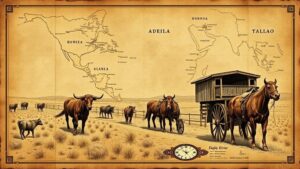Exploring NOAA’s Marine Sanctuaries for Shipwreck and Treasure Locations
Exploring NOAAs Marine Sanctuaries for Shipwreck and Treasure Locations
The National Oceanic and Atmospheric Administration (NOAA) manages a system of marine sanctuaries that protect some of the most significant underwater cultural resources in the United States. These sanctuaries offer vital insights into maritime history, ecology, and conservation, as well as opportunities for shipwreck exploration and treasure hunting. This article delves into the rich tapestry of NOAA’s marine sanctuaries, addressing the historical significance of their shipwrecks, the types of treasures that can be found, and the ongoing conservation efforts that aim to protect these submerged treasures.
Historical Context of Shipwrecks in Marine Sanctuaries
The waters managed by NOAA contain shipwrecks that date back to the Colonial Period and encompass a wide range of historical contexts. For example, the Thunder Bay National Marine Sanctuary in Michigan is known for its extensive collection of over 200 shipwrecks, including vessels from the Great Lakes shipping heyday in the 19th century. Notable wrecks include the SS H.G. Olds, which sank in 1885 due to navigation errors amidst a fierce storm. Such sites provide a direct link to maritime history and the economic activity of the region, illustrating how trade and transportation evolved in American waters.
Types of Treasures Found in Marine Sanctuaries
The term “treasure” often conjures images of gold coins and jewels; however, the treasures found in NOAAs marine sanctuaries are diverse and include artifacts that can yield insights into cultural practices, trade routes, and technological advancements of bygone eras. Common types of treasures discovered in sanctuaries include:
- Artifacts: Such as tools, ceramics, and personal items that once belonged to crew members.
- Ship Materials: Elements of ship construction, like cannons, anchors, and hull remains that can inform maritime archaeology.
- Historical Manuscripts: Logs and records recovered from vessels which can provide information about voyages and trade.
For example, the Florida Keys National Marine Sanctuary is renowned for its shipwrecks, including the famous Spanish galleon Nuestra Señora de Atocha, which sank in 1622 off the coast of Florida. Search efforts led to the recovery of millions of dollars worth of gold and silver ingots, and artifacts such as cannons and ceramics that continue to inform historical narratives around the Spanish treasure trade.
Conservation Efforts in NOAAs Marine Sanctuaries
While exploration and the potential for treasure hunting attract interest, the preservation of these underwater cultural resources is paramount. NOAA enforces regulations aimed at protecting shipwreck sites and associated artifacts through initiatives such as:
- Education Programs: Public outreach initiatives that teach respect for underwater cultural heritage.
- Research Funding: Grants for archaeologists and historians to investigate wrecks and their historical significance.
- Site Designation: Protective measures that include restricting salvage operations in certain areas.
In October 2021, NOAA released a report detailing the state of various sanctuaries in relation to shipwreck preservation, highlighting the successful recovery of sites and the development of regulations to prevent looting and unauthorized exploration.
Real-World Applications and Tourism
The exploration of shipwrecks and search for treasures in NOAAs marine sanctuaries not only contributes to academic knowledge but also serves a practical purpose in the tourism sector. Many sanctuaries offer diving tours and educational programs that attract marine enthusiasts. For example, the Channel Islands National Marine Sanctuary in California offers guided diving experiences that allow tourists to explore underwater sites, including a shipwreck from WWII. This fusion of historical exploration and recreational activity underlines the importance of sustainable practices that promote both preservation and enjoyment of marine environments.
Conclusion
NOAAs marine sanctuaries represent a treasure trove of underwater cultural resources that are vital for understanding maritime heritage. The shipwrecks found within their boundaries are not merely relics of the past but are integral to research, education, and responsible tourism. As efforts continue to balance exploration with conservation, the opportunities presented by these sanctuaries illustrate the importance of protecting our underwater heritage for future generations. Stakeholders, including researchers, local communities, and policymakers, must work collaboratively to ensure these historical resources are preserved while allowing for responsible access and exploration.


